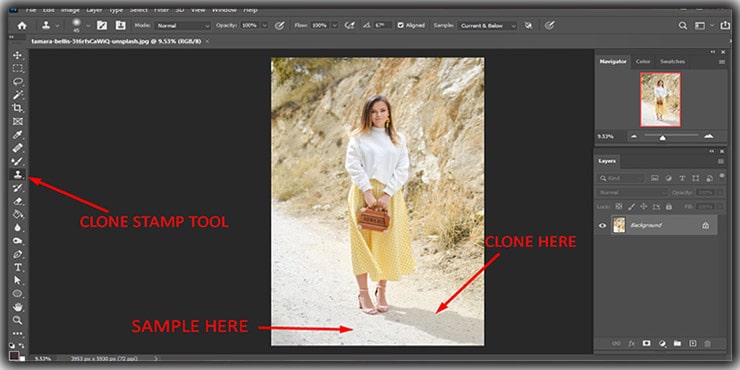

Just remember to do all of that work beneath your "final touch" colour and contrast adjustments. If the picture is roughly right and nothing important is clipped in the base image data, then there's little you can't do with adjustment layers over top of your detail work. If you've spent four hours perfecting the silky fur on your glorious, world-beating cat picture before deciding that the image is two stops underexposed, the highlights over there are blown, the noise is unbearable, and the cat probably wasn't purple after all, then it's time to re-examine your process. No, they can't adequately manage a 2500K shift in colour temperature or rescue clipped highlights and shadows¹, but you shouldn't be doing pixel-level work on a picture you're not even sure can "work" yet. Once you're in the right ballpark, you shouldn't need to go back to ACR (or what have you) again adjustment layers within Photoshop can reasonably large adjustments over top of your retouching work. If you sand, stain and finish your rough lumber before you decide what you're going to build, don't be surprised if the sawing, drilling and routing messes that up a bit. That includes things like multiple developments, which you might orchestrate from inside of Photoshop using Smart Objects (to rescue textures, to fix or fake mixed lighting, and so forth). No, they're not as precise as your subsequent work in Photoshop can be, but that shouldn't matter: you should be well inside the ballpark with your major adjustments long before you go off diving into details.

Those tools work at the raw image file level, and are applied before adjustments are carried out.
Clone stamp tool not working on mac photoshop 14 pro#
That said, Adobe Camera Raw, Lightroom and Capture One Pro all have at least basic spot removal tools (more like the healing brush than the clone stamp) that will allow you to get most of the heavy lifting done on the "negative" (provided that you're using a reasonably current version, of course). Even if you could, in some sense, do completely non-destructive pixel cloning or pixel synthesis (healing) all the way through the process, your cloning/healing source might no longer be appropriate after you've made adjustments to the underlying image. There is, and always will be, a point at which you have to say "I've stopped working on the 'negative' and am now working on the 'print'". Other than these tricks, I don't know any other non-destructive ways to use the clone stamp tool! And yes, it does take a bit longer but it's worth it. Sometimes looking at the separations will show more detailsĪbout areas that were not well cloned and that have different densities of colors You can verify if you did a good job by having a look at yourĬhannels.Results to do it with many stamping to mix all the pixels around the Unless you need to clone something very small, you shouldn't try toįix an image with a big clone stamp in one shot! It gives better.Imperfections are always more obvious when you adjust your pictures This is to avoid cloningĪreas that don't really belong to the pixels you want to cover these Your clone stamp should be in the middle of the cloned area, if youĬan imagine the 2 circles in your head. Go in a circular motion around the area to cover. To clone that means you always stay within the same radius and you Place your clone stamp brush in half the portion of the area you want.Never "copy" a cloned area again, blur effect, "spots".Big areas shouldn't be cloned with that tool. Sometimes to fit the area you need to correct. That's why you need to select the right size of brushes and change Never clone the same area twice it might make the blur more visible.Only stamp with a small brush with no hardness, even if it takes.The technique I use and learnt in digital manipulation was (doesn't mean it's the best but there's good reasons why it's better for some stamping jobs): Actually, I'm tempted to think you will have less issues during your next manipulations than by using different layers or smart objects. You can work on the original layer with the clone stamp tool.


 0 kommentar(er)
0 kommentar(er)
